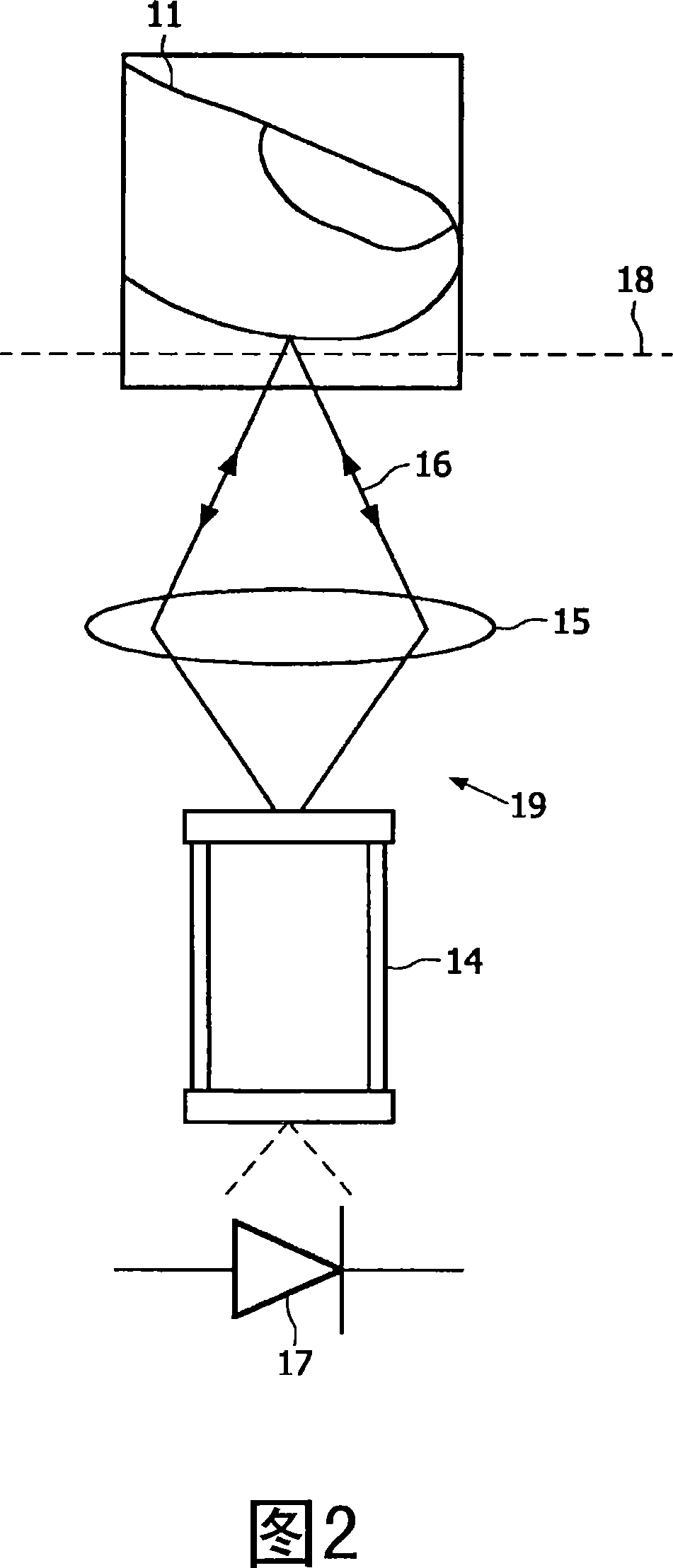Glucose sensor
A technology of glucose concentration, living body, applied in the field of non-invasive measurement of blood glucose concentration
- Summary
- Abstract
- Description
- Claims
- Application Information
AI Technical Summary
Problems solved by technology
Method used
Image
Examples
Embodiment Construction
[0023] Referring to Figure 1 of the drawings, there is schematically shown a system 10 for performing non-invasive measurements of blood glucose concentration in a living being. The temperature of the fingertip surface 11 can be measured using thermistors D1 and D4 and thermopile D3 to determine the amount of heat generated. Light-emitting diodes (LEDs) L1-L6 and photodiodes D5-D7 are used to measure Hb and HbO by spectral reflectance spectroscopy 2 Concentration, however, Raman spectroscopy, photoacoustic spectroscopy, thermal emission spectroscopy and optical coherence tomography may also be used.
[0024] The light generated by the LEDs L1-L6 is transmitted to the surface of the finger 11 through a set of optical fibers 12, and the light reflected from the surface of the finger is returned to the photodiodes D5-D7 through a second set of optical fibers 13. For determination of Hb and HbO 2 The wavelength of the concentrated light is generally in the range of 470nm-950nm i...
PUM
 Login to View More
Login to View More Abstract
Description
Claims
Application Information
 Login to View More
Login to View More - R&D
- Intellectual Property
- Life Sciences
- Materials
- Tech Scout
- Unparalleled Data Quality
- Higher Quality Content
- 60% Fewer Hallucinations
Browse by: Latest US Patents, China's latest patents, Technical Efficacy Thesaurus, Application Domain, Technology Topic, Popular Technical Reports.
© 2025 PatSnap. All rights reserved.Legal|Privacy policy|Modern Slavery Act Transparency Statement|Sitemap|About US| Contact US: help@patsnap.com


